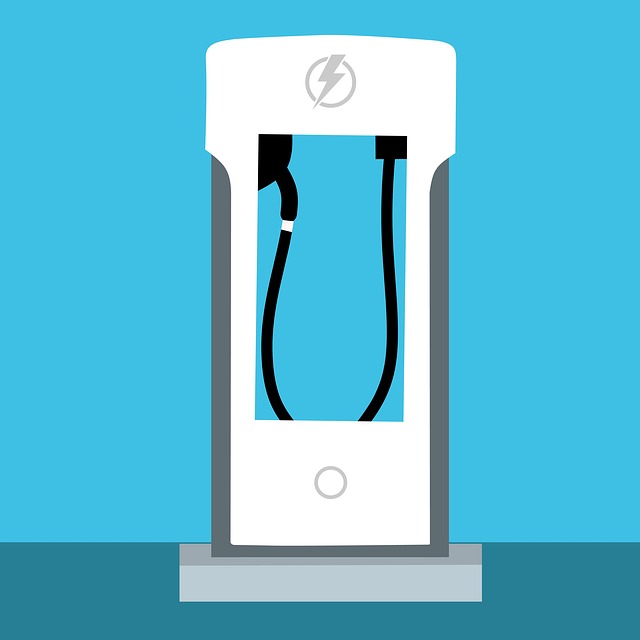OpConnect: charging tomorrow's electric fleet
An EV charging network powered by the cloud
ABOUT
Powering EVs nationwide
Today’s electric vehicle landscape features everything from e-bikes and scooters to high-performance supercars, new luxury brands, and even full-size Ford trucks.
But just a few years ago, it wasn’t clear that the EV landscape would exist at all. Investment from major automakers was limited. As recently as 2006 people were asking Who Killed the Electric Car. Without a network of charging stations equivalent in scope to the gas stations that keep conventional internal combustion engine vehicles fueled up, EVs were restricted to short-range, second-vehicle status.
In the summer of 2008, with the future of EVs still very much in question, Portland-based OpConnect set out to change that. OpConnect’s turnkey charging systems can be installed almost anywhere, from apartments and offices to car dealerships, parking garages, hotels, tourist destinations, or anywhere else that might benefit from offering charging as a service.
Today, OpConnect chargers can be found across the US, from Hawaii to upstate New York and almost everywhere in between.

CTO, OpConnectMonthly data cost fell by 60-70% with no reduction in performance.
CHALLENGE
A new network for transportation
Both drivers and automakers see the appeal of electric vehicles. The EV market is now expected to grow to nearly a trillion-dollar value over the next ten years, representing nearly 30 million EVs by 2030. That’s great news, but it’s also well beyond the capability of today’s EV charging infrastructure.
For comparison, there are about 300 million vehicles in service in the US today, served by between 110K and 150K conventional gas stations. Clearly, our EV charging infrastructure will have to grow quickly to keep pace.
But the economics of EV charging are very different from what we’re used to with conventional fueling. While the social benefit of providing more charging stations in more places is clear, the economic incentives for individual property owners are a little less obvious.
Who pays for installation? Who pays for maintenance? Who covers the cost of electricity?
OpConnect’s turnkey, networked charging systems make powering up easy and accessible for drivers while offering property owners the simplicity of remote maintenance, built-in payment capability, and advanced energy management to minimize cost.
SOLUTION
Plug and play charging stations, fully cloud-connected
In a competitive market, OpConnect stands out for its focus on overall ease of use and lifetime cost reduction. Their current generation of plug-and-play charging stations can be installed by any licensed electrician, a major step forward that removes the usual cost of manufacturer commissioning and certified installation.
Once stations are in place, OpConnect’s cutting-edge IoT technology makes it easy for providers to offer EV charging as a service. Networked stations cost slightly more upfront, but they also allow for real-time monitoring, remote troubleshooting, payment capture, and a wide range of customer convenience features.
Each station’s onboard data connection gives owners granular insight into a broad set of data points, from the time, duration, and power used in each charging event to rolling averages, peaks and valleys in power usage, and high-level metrics like total greenhouse gas emissions avoided.
That same real-time connection also helps operators to recoup the cost of installation, service, and maintenance directly. OpConnect touchscreens can pull advertising down from the cloud, while onboard credit-card validation removes the need for complicated subscription plans or call center-based verification systems. App-based reservations complete the package, helping to attract and retain EV drivers wherever OpConnect stations are deployed.
These connected features make it easy to deploy and operate OpConnect charging stations and help to expand the vital infrastructure that will accelerate EV adoption in the coming decade.
WHY SORACOM
Higher security, higher value
As the OpConnect team prepared to roll out a new generation of Plug-N-Play, OCPP-enabled charging stations, they recognized an opportunity to take a fresh look at connectivity.
With over a decade of experience connecting charging stations to the cloud, the priority was clear: remove any barriers that might slow expansion of the EV charging network. At a minimum, any new connectivity provider would have to connect stations reliably from Hawaii to New York for ease of installation while keeping the cost of service to an absolute minimum.
In early testing, the team was immediately impressed with the value that Soracom’s pooled billing and automatic volume discounts could deliver. According to OpConnect Founder and CTO Dan Lulich, monthly data cost fell by 60-70% with no reduction in performance.
As an added benefit, Soracom’s Napter service helps to maximize security by providing remote access to any charger on demand. Since Napter doesn’t require a fixed IP address or VPN, OpConnect chargers remain effectively invisible to the Internet at large while still allowing access when needed.
Services in use
• SORACOM Air: smart connectivity for IoT
• SORACOM Napter: on-demand remote access

FUTURE PLANS
Stepping up to meet demand
By 2025, nearly 10% of the vehicles on the road in the US may be electric or hybrid electric. Major global manufacturers like Ford and VW have shown commitment to electric and plug-in hybrid models across every vehicle segment, from cargo vans to flagship luxury sedans.
These vehicles offer distinct social benefits, like reduced fossil fuel dependence, lower greenhouse gas emissions, and increased vehicle safety.
And because electric motors deliver peak torque at 0 rpm, they’re ideal for heavy-duty tasks like pulling stumps or hauling heavy loads or, in sport applications, for dramatic acceleration off the line.
To meet that demand, OpConnect will continue to focus on building out its nationwide charging network by offering charging operators technically advanced stations that are easy to deploy and affordable to maintain, with built-in cost recovery from day one.
